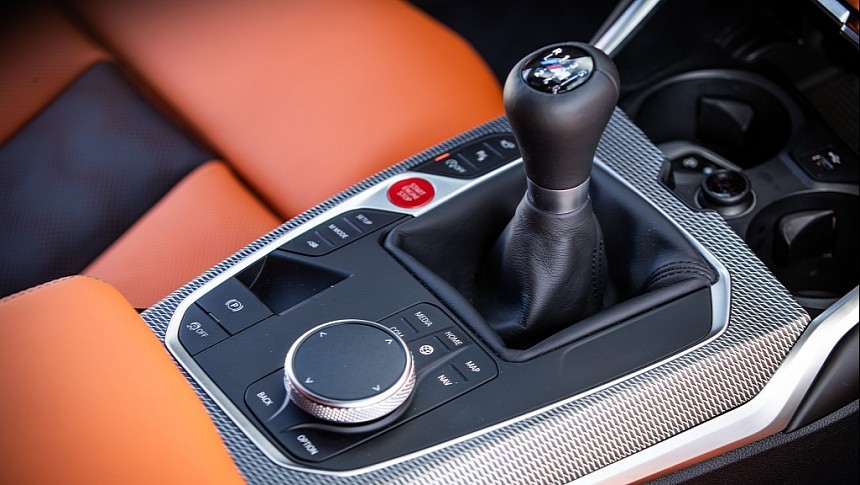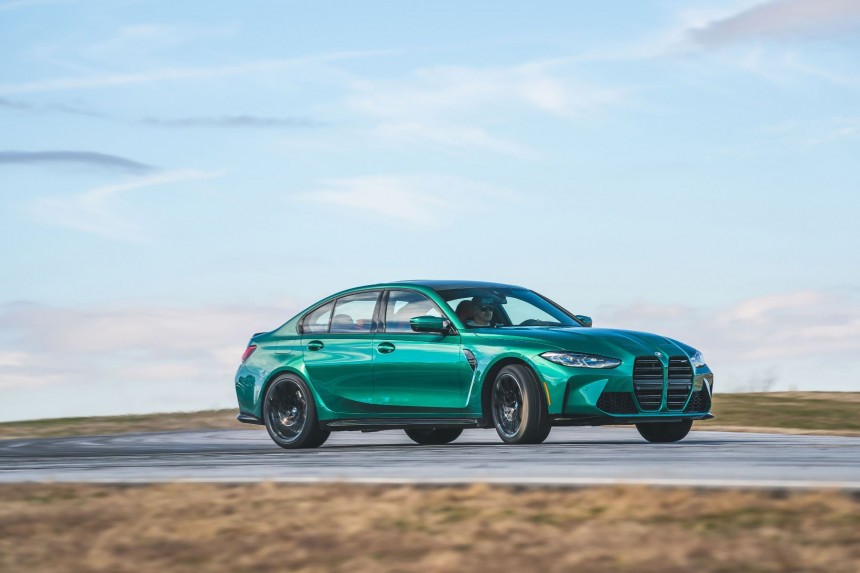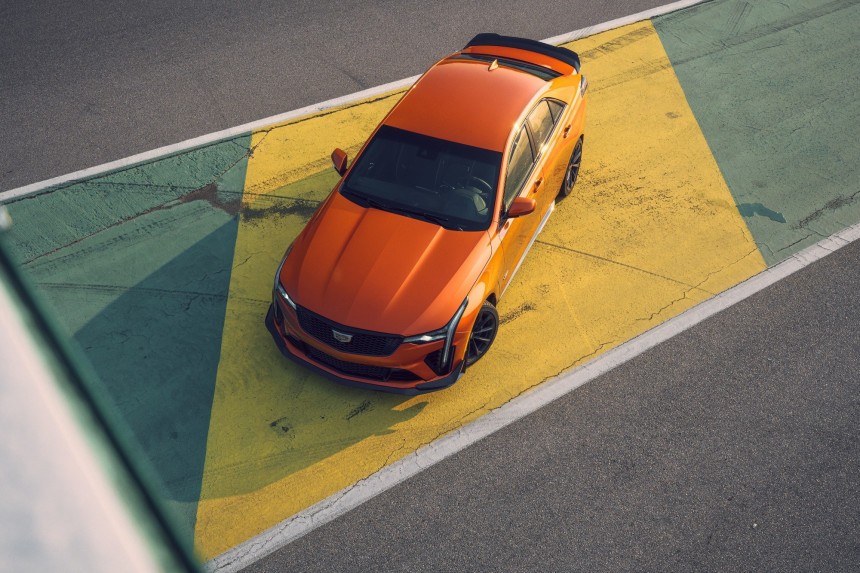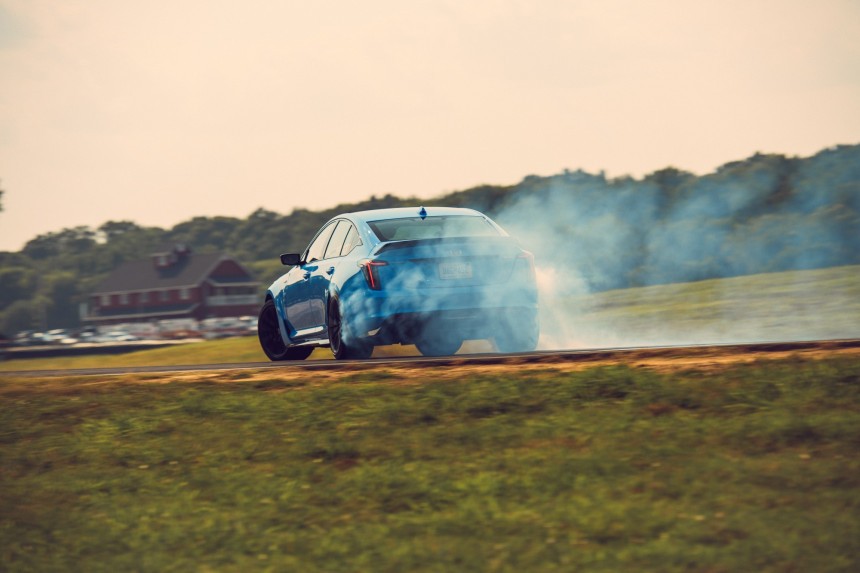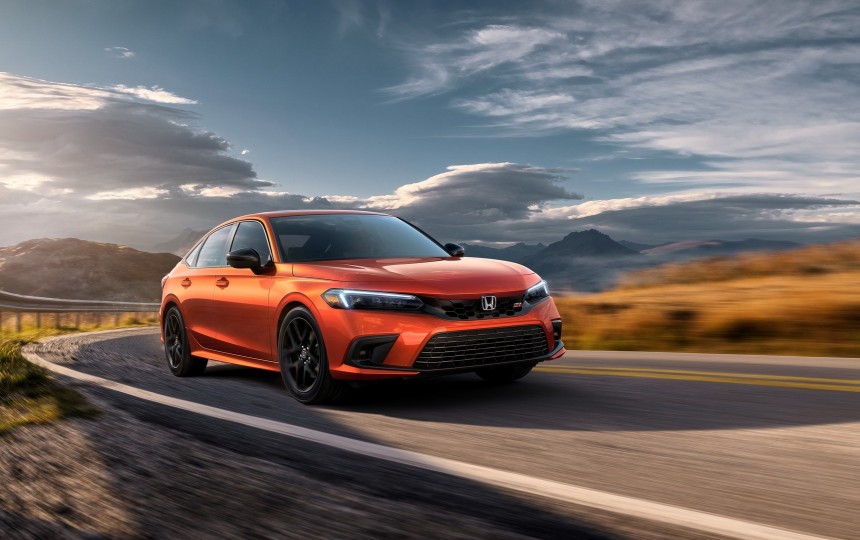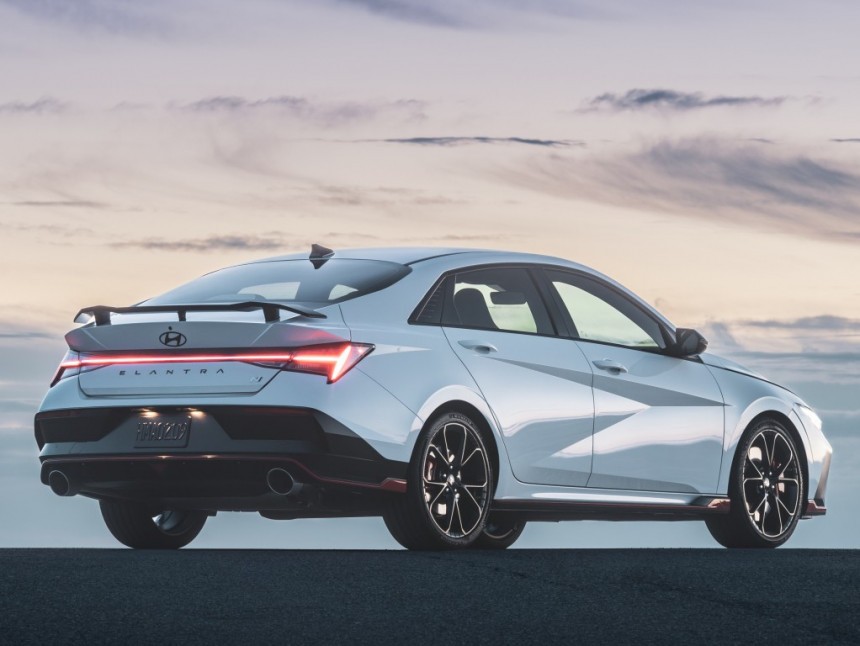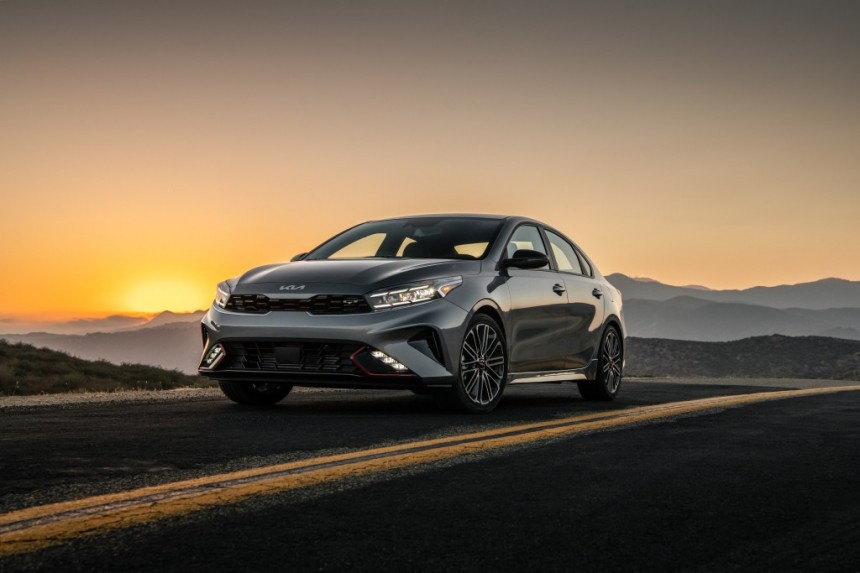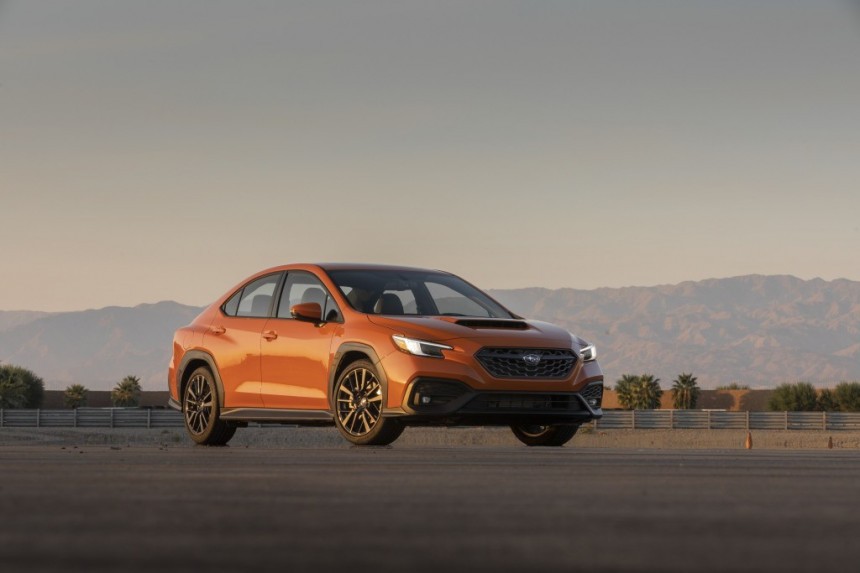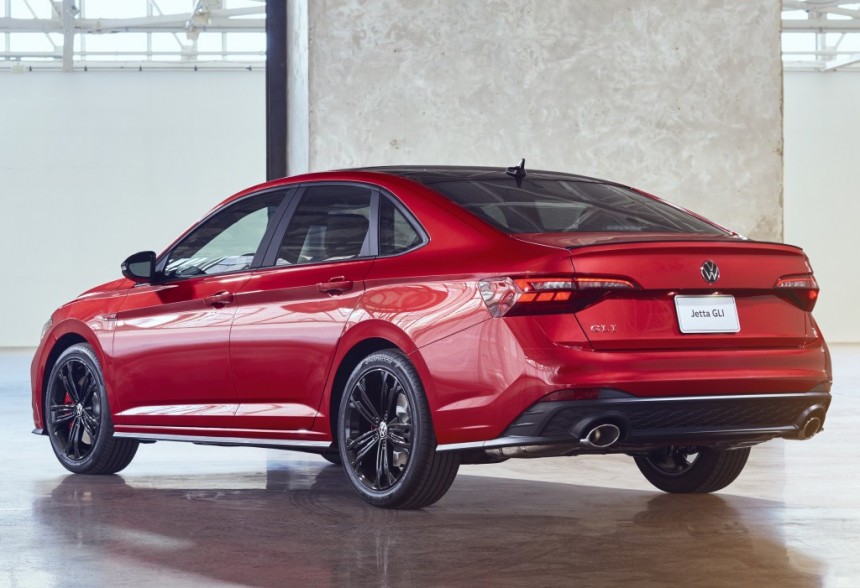Stop me if you heard this one before, but the stick shift is an increasingly extinct means of changing gears. It wasn't always this way, though. The question is, why did the automotive industry slowly but steadily transition to autos, double-clutchers, and those pesky continuously variable transmissions?
Back in 2002, BorgWarner launched the world's first mass-production DCT in the Volkswagen Golf R32. Also sold in North America and Australia for the 2004 model year, the R32 with the dual-clutch transmission needs 6.4 seconds to accelerate from zero to 100 kilometers per hour, which is 62 miles per hour in old money. The manual is – or better said was – listed with 6.6 clicks in European specification.
Over time, automotive suppliers and automakers alike improved the design to such an extent that DCTs are more frugal than manuals in modern vehicles. Take, for instance, the Volkswagen Golf GTI for the European market: 7.1 liters per 100 kilometers (33.1 miles per gallon) for the manual versus 7.0 (33.6) for the DSG dual-clutch tranny. When it comes to mass-market brands such as Volkswagen, pivoting to DCTs makes a lot of sense. Not only can Volkswagen charge you more money due to the increased complexity of a dual-clutch transmission, but it also helps lower the German automaker's fleet-wide carbon dioxide emissions.
Over in the United States of America, where CAFE regulations require an industry-wide fleet average of 49.2 miles per gallon (4.78 liters per 100 kilometers) by 2026 for passenger cars, the Golf R DSG is two miles per gallon better than its stick-shift sibling. German econoboxes aside, it's even worse in the sport and supersport segments. From the eighth-gen Corvette to the far pricier lineups of Ferrari, Lamborghini, and Koenigsegg, the vast majority of corner-carving exotica now comes with dual-clutch boxes.
Even more surprisingly, the manual performance sedan is a dying breed as well. As of December 31, 2023 going on January 1, 2024, a grand total of eight performance sedans available new in the US market can be had with a stick shift. Only one of them is a VeeDub, but due to alphabetical order, we'll leave that one last and kick off this list with the G80 M3.
The first of two six-cylinder cars to make this list, the sixth-generation M3 rocks an evolution of the ZF GS6 previously used by the E90. The Z4 M40i will be available with said tranny for the 2024 model year. Often described by owners and automotive journos alike as being rubbery and notchy, the GS6 cannot be had with M xDrive or in Competition specification.
A bit of a bummer, isn't it? Bear in mind we're nitpicking here. After all, 473 horsepower and 406 pound-feet (550 Nm) of torque is plenty enough in a D-segment sedan designed for blasting down a winding road. You also have to remember that BMW sandbags the output numbers of the S58 in the M3, as well as the B58 on which the S58 engine is based.
Back in July 2022, the folks at Mosselman Turbo Systems strapped a bone-stock M3 to the dyno. Instead of the manufacturer's claimed figures, the manual-equipped Bimmer actually made 496 horsepower (503 ps) and 448 pound-feet (607 Nm) at the crankshaft. Similarly, an M4 manual recorded 465 horsepower and 409 pound-feet (555 Nm) at the wheels. Assuming a 15-percent drivetrain loss, that means roughly 547 horsepower and 480 pound-feet (651 Nm) at the crank. Impressive stuff, for sure!
Scheduled to receive a Life Cycle Impulse in the second half of 2024 for the 2025 model year, the G80 M3 is $76,000 sans destination charge. Level up to the ZF 8HP-only Competition, and you're looking at $80,200 before delivery and extras. Add M xDrive on top of that, and the MSRP balloons to $84,300. The do-it-yourself transmission is advertised with a 0-60 time of 4.1 seconds. Top speed is electronically limited to 155 miles per hour (250 kilometers per hour), yet the M Driver's Package unlocks an additional 25 for 2,500 of your hard-earned dollars.
In a parallel universe, the sixth-generation Chevrolet Camaro would have been offered with a twin-turbocharged V6. Twinned with the now-discontinued pony car on the GM Alpha platform, the CT4-V Blackwing is the Detroit-based automaker's take on the BMW M3, although the Caddy is a bit smaller in terms of length, wheelbase, and width.
Not to be confused with the four-cylinder CT4-V, the Blackwing is named after one of GM's biggest flops. It boggles the mind that the Blackwing twin-turbo V8 – a.k.a. production order code LTA – saw a meager two applications in total (CT6 Platinum and CT6-V). Likewise, it truly boggles the mind that General Motors didn't design the 4.2-liter V8 with the upcoming 2025 model year Corvette ZR1 in mind.
Turning our attention back to the CT4-V Blackwing, the ATS-V's heir is advertised with a 0-60 time of 4.2 seconds for the Tremec-supplied manual or 3.9 seconds for the 10-speed automatic. The torque-converter automatic may be designated Hydra-Matic 10L, but in truth, said transmission was primarily developed by Ford Motor Company as part of a joint venture between Detroit's two largest automakers.
Rated at 472 horsepower and 445 pound-feet (603 Nm), the Caddy is pretty close to the segment's favorite sports sedan. A seriously fun alternative to the M3, the CT4-V Blackwing has the upper hand over the plug-in hybrid Mercedes-AMG C 63 S E-PERFORMANCE due to rear-wheel drive, lower weight, more cylinders, and – of course – a manual box. Don't expect the Cadillac to win a drag race against the Merc, though, because the auto- and AWD-only C 63 can summon up to 671 ponies and a ridiculous 752 pound-feet (1,020 Nm).
Also based on the Alpha vehicle architecture, the CT5 serves as the successor to Cadillac's long-running CTS line of mid-size luxury sedans. The CT5-V Blackwing replaces the CTS-V, and similarly to its predecessor, the beating heart of the BMW M5-rivaling sedan is the LT4 supercharged small block.
Originally rated at 640 horsepower and 630 pound-feet (854 Nm), said lump is good for 668 horses and 659 pound-feet (893 Nm) in the CT5-V Blackwing. What is especially surprising about Cadillac's most powerful combustion-engined sedan ever is that someone at General Motors came up with the idea of a manual in a segment in which the German establishment got rid of the row-your-own gearbox.
Another party piece of the CT5-V Blackwing is the damping technology. Magnetorheological dampers were chosen over Multimatic's Dynamic Suspension Spool Valve due to ride quality concerns. Having learned its lesson from the fifth-gen Camaro Z/28, the American automaker made MagneRide 4.0 standard on the CT5-V Blackwing, its smaller brother, the Escalade-V, as well as the Chevrolet Corvette Z06.
Introduced on the Seville STS more than two decades ago, MagneRide was developed by Delphi. It's now supplied by the folks at BeijingWest Industries, which acquired Delphi's chassis division in 2009. Designed to mitigate body roll without compromising ride quality with stiff stabilizers, the MagneRide 4.0 system in the CT5-V Blackwing reads the road surface a staggering 1,000 times a second. Its control unit reacts to changes in the blink of an eye, with electromagnetic coils continuously changing the magnetorheological fluid's viscosity.
From here on out, four-cylinder turbos will have to suffice. The Civic Si-specific version of the Honda 1.5-liter turbo is the least punchy of the bunch, yet 200 horsepower and 192 pound-feet (260 Nm) of twist in a compact-sized sedan is nothing to scoff at.
Think of it this way: 14.53 pounds for every horsepower of the current-gen Civic Si versus 14.75 pounds for every horsepower of the original from 1984. At $29,100 for the 2024 model year, the Civic Si is extremely good value, all the more so considering that it's equipped from the get-go with everything you could wish for in a compact sedan.
Standard goodies include a limited-slip differential, the Honda Sensing suite of driving assistance and safety features, a premium audio system with Bose speakers, cordless Apple CarPlay and Android Auto, and a one-touch moonroof. The Civic Si also happens to be good on fuel, with Honda advertising an EPA-rated 31 mpg (7.6 l/100 km) in the combined cycle.
Despite its overweighted electric power steering, the standard all-season tires, somewhat lengthy rev hang, and fixed-rate dampers compared to the forerunner's two-mode electronically adaptive dampers, the 2022 and newer Honda Civic Si fully embodies the "slow car fast" mantra. Just like the five-door Civic Type R, the four-door Civic Si can't be had with anything other than an active rev-matching manual gearbox.
Marketed as the Avante in South Korea, the Elantra always stood in the shadow of the Civic sedan and Corolla sedan. But with the 2024 model year facelift, Hyundai managed to best the segment's best-selling sedans in exterior styling, tech, and standard equipment. Prospective customers in the market for an Elantra that's also fun to drive can splurge a few additional bucks on the N version, which is offered with either a six-speed manual or a wet-clutch DCT.
In addition to quick shifts, the eight-speed N DCT's party trick is N Grin Shift, a driving mode that temporarily increases boost pressure for an extra 10 horsepower. The stick shift makes do with 276 ponies from 5,500 to 6,000 revolutions per minute, whereas peak torque is estimated at 289 pound-feet (392 Nm) between 2,100 through 4,700 revolutions per minute.
Striking a fine balance between spirited corner muncher and frugal daily driver, the four-wheeled rascal has been fine-tuned for 2024 in many a ways. To improve agility while reducing unwanted vibrations, Hyundai reinforced the engine mount's membrane. G-bushing reinforcement promises better steering precision and yaw response, whereas the rear suspension's insulator was changed from rubber to urethane to improve the damping and yaw response.
Many other small changes make the 2024 model superior to the pre-facelift Elantra N, which – at press time – carries a sticker price of $32,900 in the United States. The 2024's retail price has yet to be announced. In regard to optional extras, prospective customers are presented with the aforementioned N DCT and no fewer than five paint colors. The N-exclusive Performance Blue and White cost $450.
As per a leaked email, 2024 is the final year of the Forte in the United States of America. To be replaced by a fastback-style sedan for the 2025 model year, the Forte boasts a naturally aspirated 2.0er with 147 horsepower and 132 pound-feet (just under 180 Nm of torque) on deck. This engine is exclusively connected to something called Intelligent Variable Transmission, whereas the punchier 1.6 turbocharged inline-four of the GT performance grade can be had with a choice of seven-speed DCT or a stick shift.
The only problem with picking the manual over the double-clutcher is price. Kia wants $700 over the dual-clutch transmission, which is a slap in the face of anyone considering to purchase a Forte GT. Looking at the glass half full, $24,490 for the dual-clutch box and $25,190 for the manual transmission makes the Forte GT the most affordable performance sedan on sale in the United States market right now.
Though the Civic Si looks better both inside and out, Kia's compact sedan is more powerful (201 horsepower) and torquier (195 pound-feet or 264 Nm). Upgrading from lesser grades to the GT further unlocks a multi-link rear end in place of a torsion beam-style axle. The most affordable car in the compact sports sedan segment isn't as spartan as some folks might imagine it to be. From the 10.25-inch touchscreen infotainment system with built-in sat nav to the Harman Kardon audio, SynTex-wrapped heated seats with red stitching, Michelin Pilot Sport 4 summer tires, and wireless phone charger, this fellow is the very opposite of spartan.
If the Forte-replacing model will ever get a performance version, chances are Kia won't bother with a manual, not when the Forte GT manual accounts for 1 percent of the Forte's production for the US market. With Kia and sister company Hyundai being laser-focused on electric vehicles, one also has to wonder whether a performance version of the Forte's replacement is commercially viable or not. Whatever the Forte's descendant will be called, we do know that Kia Corporation filed K3 and K4 with the US Patent and Trademark Office back in late 2019.
Born on the rally stages, the Impreza WRX morphed into the WRX for the 2015 model year. Codenamed VA, the first-gen WRX could be had in two specifications: the WRX and the WRX STI. For the VB, the Japanese automaker couldn't be bothered to gift us with a Subaru Tecnica International version.
Why is that? A statement published by Subaru in March 2022 reads the following: "As the automotive marketplace continues to move towards electrification, Subaru Corporation is focused on how our future sports and performance cars should evolve to meet the needs of the changing marketplace and the regulations and requirements for greenhouse gasses, zero-emission vehicles, and Corporate Average Fuel Economy." Very saddening indeed…
Reading between the lines, the Tokyo-based manufacturer thought about this carefully. WRX sales are down (18,662 units delivered in 2022 compared to 30,943 during calendar year 2016), and the company's research & development money is better spent on SUVs and EVs. If Subaru continues to depend on Toyota for hybrid and electric vehicle technologies, the once-proud automaker will eventually come under the control of Japan's largest automaker (and the largest automaker in the world; Toyota sold 10.5 million vehicles back in 2022).
$2,130 more expensive for 2024 compared to the 2023 model, the WRX comes in five grades. At the very top of the range, the TR will set you back $41,655. Exclusively manual, the TR also sports better brakes, stiffer springs with revised damping rates, a returned steering rack, and TR-specific alloy wheels wrapped in Bridgestone Potenza S007 tires.
Essentially a repackaged Golf GTI, the Jetta GLI produces 228 horsepower and 258 pound-feet (350 Nm) as opposed to 241 horsepower and 273 pound-feet (370 Nm). Both use the Volkswagen Group's most famous of four-pot turbocharged mills, namely the EA888 that VeeDub advertises as the 2.0 TSI.
The 2.0-liter version of the EA888 started production in the first quarter of 2008. Its most powerful application to date is the Golf R, in which the 2.0-liter turbo makes 315 horsepower and 310 pound-feet (427 Nm) at full chatter. You don't need that much to have a lot of fun behind the wheel, though, and you definitely don't need all-wheel drive because good tires make a bigger difference than all-wheel drive in both sporty driving scenarios and in cold weather.
Exceptional value at $27,995 excluding the delivery fee, Volkswagen's compact performance sedan is far from perfect. Suppose that handling impressions are 100 percent subjective, with everyoning liking the Jetta GLI from a dynamic standpoint. Everyone would also be disappointed by the dated interior, which shows signs of accountants pinching one too many cents.
With the Volkswagen Group wanting electric vehicles to make up 55 percent of sales in the US market by 2030, it's only a matter of time until Volkswagen advances battery-electric vehicles to the detriment of internal combustion-engined vehicles. Looking at the bigger picture, Volkswagen may be forced to adjust said target if EV adoption stagnates in the next couple of years. For the time being, the reasonably priced Jetta outsells the ID.4 in the US.
Over time, automotive suppliers and automakers alike improved the design to such an extent that DCTs are more frugal than manuals in modern vehicles. Take, for instance, the Volkswagen Golf GTI for the European market: 7.1 liters per 100 kilometers (33.1 miles per gallon) for the manual versus 7.0 (33.6) for the DSG dual-clutch tranny. When it comes to mass-market brands such as Volkswagen, pivoting to DCTs makes a lot of sense. Not only can Volkswagen charge you more money due to the increased complexity of a dual-clutch transmission, but it also helps lower the German automaker's fleet-wide carbon dioxide emissions.
Over in the United States of America, where CAFE regulations require an industry-wide fleet average of 49.2 miles per gallon (4.78 liters per 100 kilometers) by 2026 for passenger cars, the Golf R DSG is two miles per gallon better than its stick-shift sibling. German econoboxes aside, it's even worse in the sport and supersport segments. From the eighth-gen Corvette to the far pricier lineups of Ferrari, Lamborghini, and Koenigsegg, the vast majority of corner-carving exotica now comes with dual-clutch boxes.
Even more surprisingly, the manual performance sedan is a dying breed as well. As of December 31, 2023 going on January 1, 2024, a grand total of eight performance sedans available new in the US market can be had with a stick shift. Only one of them is a VeeDub, but due to alphabetical order, we'll leave that one last and kick off this list with the G80 M3.
BMW M3
A bit of a bummer, isn't it? Bear in mind we're nitpicking here. After all, 473 horsepower and 406 pound-feet (550 Nm) of torque is plenty enough in a D-segment sedan designed for blasting down a winding road. You also have to remember that BMW sandbags the output numbers of the S58 in the M3, as well as the B58 on which the S58 engine is based.
Back in July 2022, the folks at Mosselman Turbo Systems strapped a bone-stock M3 to the dyno. Instead of the manufacturer's claimed figures, the manual-equipped Bimmer actually made 496 horsepower (503 ps) and 448 pound-feet (607 Nm) at the crankshaft. Similarly, an M4 manual recorded 465 horsepower and 409 pound-feet (555 Nm) at the wheels. Assuming a 15-percent drivetrain loss, that means roughly 547 horsepower and 480 pound-feet (651 Nm) at the crank. Impressive stuff, for sure!
Scheduled to receive a Life Cycle Impulse in the second half of 2024 for the 2025 model year, the G80 M3 is $76,000 sans destination charge. Level up to the ZF 8HP-only Competition, and you're looking at $80,200 before delivery and extras. Add M xDrive on top of that, and the MSRP balloons to $84,300. The do-it-yourself transmission is advertised with a 0-60 time of 4.1 seconds. Top speed is electronically limited to 155 miles per hour (250 kilometers per hour), yet the M Driver's Package unlocks an additional 25 for 2,500 of your hard-earned dollars.
Cadillac CT4-V Blackwing
Not to be confused with the four-cylinder CT4-V, the Blackwing is named after one of GM's biggest flops. It boggles the mind that the Blackwing twin-turbo V8 – a.k.a. production order code LTA – saw a meager two applications in total (CT6 Platinum and CT6-V). Likewise, it truly boggles the mind that General Motors didn't design the 4.2-liter V8 with the upcoming 2025 model year Corvette ZR1 in mind.
Turning our attention back to the CT4-V Blackwing, the ATS-V's heir is advertised with a 0-60 time of 4.2 seconds for the Tremec-supplied manual or 3.9 seconds for the 10-speed automatic. The torque-converter automatic may be designated Hydra-Matic 10L, but in truth, said transmission was primarily developed by Ford Motor Company as part of a joint venture between Detroit's two largest automakers.
Rated at 472 horsepower and 445 pound-feet (603 Nm), the Caddy is pretty close to the segment's favorite sports sedan. A seriously fun alternative to the M3, the CT4-V Blackwing has the upper hand over the plug-in hybrid Mercedes-AMG C 63 S E-PERFORMANCE due to rear-wheel drive, lower weight, more cylinders, and – of course – a manual box. Don't expect the Cadillac to win a drag race against the Merc, though, because the auto- and AWD-only C 63 can summon up to 671 ponies and a ridiculous 752 pound-feet (1,020 Nm).
Cadillac CT5-V Blackwing
Originally rated at 640 horsepower and 630 pound-feet (854 Nm), said lump is good for 668 horses and 659 pound-feet (893 Nm) in the CT5-V Blackwing. What is especially surprising about Cadillac's most powerful combustion-engined sedan ever is that someone at General Motors came up with the idea of a manual in a segment in which the German establishment got rid of the row-your-own gearbox.
Another party piece of the CT5-V Blackwing is the damping technology. Magnetorheological dampers were chosen over Multimatic's Dynamic Suspension Spool Valve due to ride quality concerns. Having learned its lesson from the fifth-gen Camaro Z/28, the American automaker made MagneRide 4.0 standard on the CT5-V Blackwing, its smaller brother, the Escalade-V, as well as the Chevrolet Corvette Z06.
Introduced on the Seville STS more than two decades ago, MagneRide was developed by Delphi. It's now supplied by the folks at BeijingWest Industries, which acquired Delphi's chassis division in 2009. Designed to mitigate body roll without compromising ride quality with stiff stabilizers, the MagneRide 4.0 system in the CT5-V Blackwing reads the road surface a staggering 1,000 times a second. Its control unit reacts to changes in the blink of an eye, with electromagnetic coils continuously changing the magnetorheological fluid's viscosity.
Honda Civic Si
Think of it this way: 14.53 pounds for every horsepower of the current-gen Civic Si versus 14.75 pounds for every horsepower of the original from 1984. At $29,100 for the 2024 model year, the Civic Si is extremely good value, all the more so considering that it's equipped from the get-go with everything you could wish for in a compact sedan.
Standard goodies include a limited-slip differential, the Honda Sensing suite of driving assistance and safety features, a premium audio system with Bose speakers, cordless Apple CarPlay and Android Auto, and a one-touch moonroof. The Civic Si also happens to be good on fuel, with Honda advertising an EPA-rated 31 mpg (7.6 l/100 km) in the combined cycle.
Despite its overweighted electric power steering, the standard all-season tires, somewhat lengthy rev hang, and fixed-rate dampers compared to the forerunner's two-mode electronically adaptive dampers, the 2022 and newer Honda Civic Si fully embodies the "slow car fast" mantra. Just like the five-door Civic Type R, the four-door Civic Si can't be had with anything other than an active rev-matching manual gearbox.
Hyundai Elantra N
In addition to quick shifts, the eight-speed N DCT's party trick is N Grin Shift, a driving mode that temporarily increases boost pressure for an extra 10 horsepower. The stick shift makes do with 276 ponies from 5,500 to 6,000 revolutions per minute, whereas peak torque is estimated at 289 pound-feet (392 Nm) between 2,100 through 4,700 revolutions per minute.
Striking a fine balance between spirited corner muncher and frugal daily driver, the four-wheeled rascal has been fine-tuned for 2024 in many a ways. To improve agility while reducing unwanted vibrations, Hyundai reinforced the engine mount's membrane. G-bushing reinforcement promises better steering precision and yaw response, whereas the rear suspension's insulator was changed from rubber to urethane to improve the damping and yaw response.
Many other small changes make the 2024 model superior to the pre-facelift Elantra N, which – at press time – carries a sticker price of $32,900 in the United States. The 2024's retail price has yet to be announced. In regard to optional extras, prospective customers are presented with the aforementioned N DCT and no fewer than five paint colors. The N-exclusive Performance Blue and White cost $450.
Kia Forte GT
The only problem with picking the manual over the double-clutcher is price. Kia wants $700 over the dual-clutch transmission, which is a slap in the face of anyone considering to purchase a Forte GT. Looking at the glass half full, $24,490 for the dual-clutch box and $25,190 for the manual transmission makes the Forte GT the most affordable performance sedan on sale in the United States market right now.
Though the Civic Si looks better both inside and out, Kia's compact sedan is more powerful (201 horsepower) and torquier (195 pound-feet or 264 Nm). Upgrading from lesser grades to the GT further unlocks a multi-link rear end in place of a torsion beam-style axle. The most affordable car in the compact sports sedan segment isn't as spartan as some folks might imagine it to be. From the 10.25-inch touchscreen infotainment system with built-in sat nav to the Harman Kardon audio, SynTex-wrapped heated seats with red stitching, Michelin Pilot Sport 4 summer tires, and wireless phone charger, this fellow is the very opposite of spartan.
If the Forte-replacing model will ever get a performance version, chances are Kia won't bother with a manual, not when the Forte GT manual accounts for 1 percent of the Forte's production for the US market. With Kia and sister company Hyundai being laser-focused on electric vehicles, one also has to wonder whether a performance version of the Forte's replacement is commercially viable or not. Whatever the Forte's descendant will be called, we do know that Kia Corporation filed K3 and K4 with the US Patent and Trademark Office back in late 2019.
Subaru WRX
Why is that? A statement published by Subaru in March 2022 reads the following: "As the automotive marketplace continues to move towards electrification, Subaru Corporation is focused on how our future sports and performance cars should evolve to meet the needs of the changing marketplace and the regulations and requirements for greenhouse gasses, zero-emission vehicles, and Corporate Average Fuel Economy." Very saddening indeed…
Reading between the lines, the Tokyo-based manufacturer thought about this carefully. WRX sales are down (18,662 units delivered in 2022 compared to 30,943 during calendar year 2016), and the company's research & development money is better spent on SUVs and EVs. If Subaru continues to depend on Toyota for hybrid and electric vehicle technologies, the once-proud automaker will eventually come under the control of Japan's largest automaker (and the largest automaker in the world; Toyota sold 10.5 million vehicles back in 2022).
$2,130 more expensive for 2024 compared to the 2023 model, the WRX comes in five grades. At the very top of the range, the TR will set you back $41,655. Exclusively manual, the TR also sports better brakes, stiffer springs with revised damping rates, a returned steering rack, and TR-specific alloy wheels wrapped in Bridgestone Potenza S007 tires.
Volkswagen Jetta GLI
The 2.0-liter version of the EA888 started production in the first quarter of 2008. Its most powerful application to date is the Golf R, in which the 2.0-liter turbo makes 315 horsepower and 310 pound-feet (427 Nm) at full chatter. You don't need that much to have a lot of fun behind the wheel, though, and you definitely don't need all-wheel drive because good tires make a bigger difference than all-wheel drive in both sporty driving scenarios and in cold weather.
Exceptional value at $27,995 excluding the delivery fee, Volkswagen's compact performance sedan is far from perfect. Suppose that handling impressions are 100 percent subjective, with everyoning liking the Jetta GLI from a dynamic standpoint. Everyone would also be disappointed by the dated interior, which shows signs of accountants pinching one too many cents.
With the Volkswagen Group wanting electric vehicles to make up 55 percent of sales in the US market by 2030, it's only a matter of time until Volkswagen advances battery-electric vehicles to the detriment of internal combustion-engined vehicles. Looking at the bigger picture, Volkswagen may be forced to adjust said target if EV adoption stagnates in the next couple of years. For the time being, the reasonably priced Jetta outsells the ID.4 in the US.
